Jane Ruhland, member of the Ealing Wildlife Group
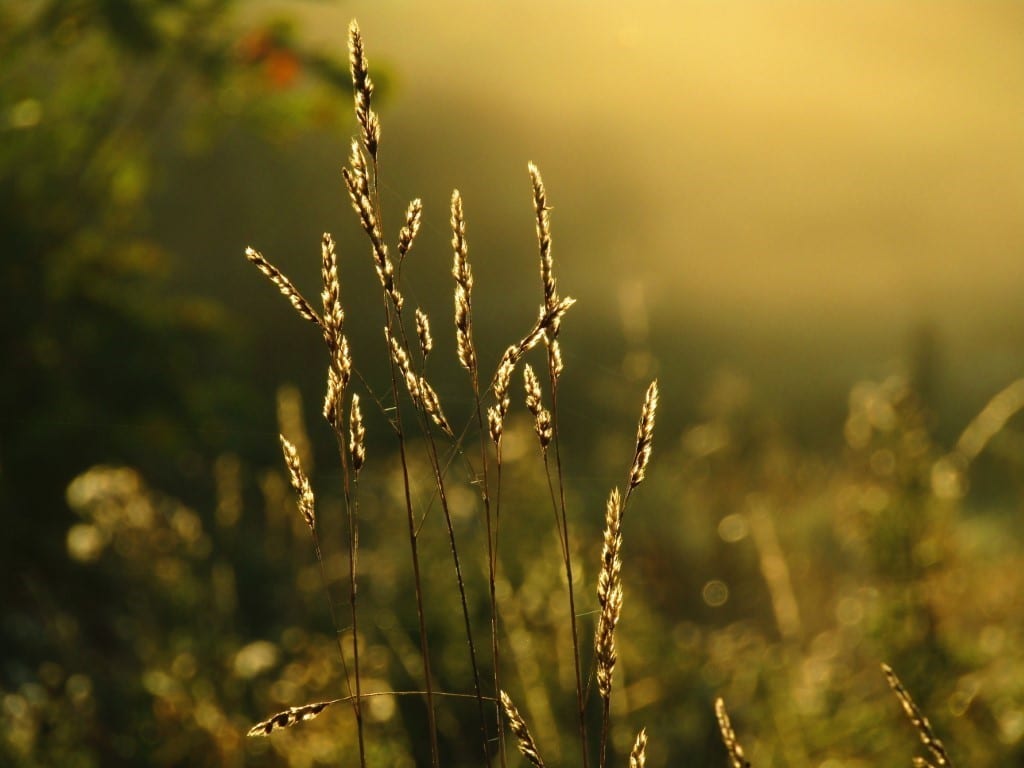
On the 1st January 2019 I began a year-long personal project – every day I would observe and record wildlife through the lens of a camera. I was inspired by the Ealing Wildlife Group who run a Facebook group which I’d recently joined and with whom I had shared posts about local wildlife. The members help each other by answering questions about wildlife in their gardens, nearby parks and open spaces. The project provided the opportunity I was looking for to connect with nature and learn more about local wildlife.
I’d previously participated in a range of conservation voluntary tasks, such as London Wildlife Trust’s “Vole Patrol” small mammal survey, “Dragonfly Detectives” project and “Urban Urchins” hedgehog survey, and helping the local group construct brush berms and flow deflectors in a nearby brook. I therefore felt prepared – knowing where I’d be able to explore, and a little about wildflowers.
The project area I chose was within walking distance of my home. It included a mosaic of green spaces within Northolt and Greenford Countryside Park. The area includes sites of importance for nature conservation (SINCs), such as the Grand Union canal towpath and the Central line railway cuttings (viewable from the station platforms), and three local nature reserves managed by London Wildlife Trust. As well as recording the wildlife here, I also wanted to include the sun rising and setting on the longest and shortest days, and the waxing and waning of the moon.
Each day I posted photos and a short report on the Ealing Wildlife Group Facebook page, and a monthly summary on my own Facebook page. The pictures were taken on the way to and from work and on early mornings on my days off.
During winter the shorter days led me to extend the project area and break my journey to work with a walk through the Royal Parks. Here I took photographs of birds on the Serpentine. It was a nice way to exercise and appreciate the sun coming up. I found I could get closer to the birds here, probably because they were more used to people, so it was great for practicing my photography. I had a small bridge camera with a range that captured the craters on the moon as well as the hairs on butterfly’s wings. The bare branches of trees in winter also enabled easier sightings of birds near home. If I could complete January, there was hope I’d finish the project by finding wildlife subjects in November and December.
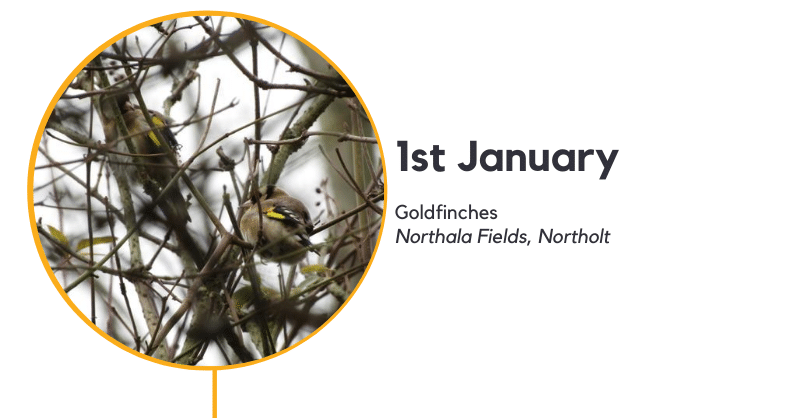
By the end of January I had photos of a different species of bird for every day, almost all taken before I arrived at work. I enjoyed looking the sightings up in bird books, and received encouraging and helpful comments from Ealing Wildlife Group members. There were cormorants, tufted ducks, Canada geese, gadwalls, shovelers, and moorhens, amongst many others. The weather was sometimes wet or windy but I kept spare clothes in the office so it was never a problem. A highlight was photographing a little wren on a frosty nettle. I was surprised by it’s stillness and the full view I got of it – long enough for a close-up picture.
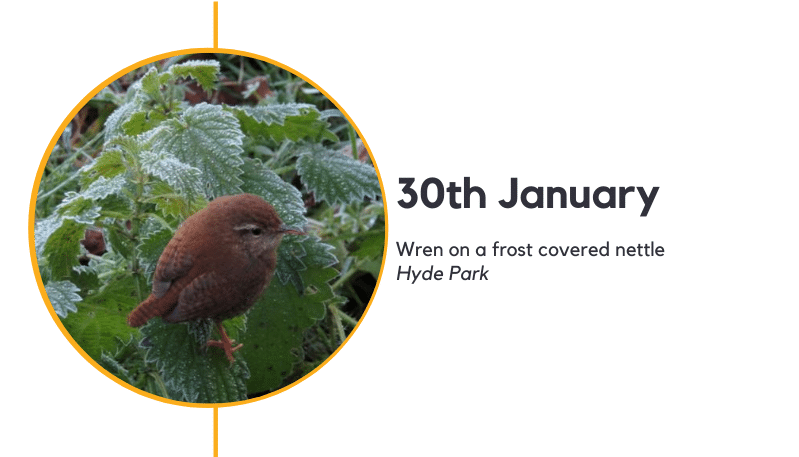
In February violets, coltsfoot and lesser celandines bloomed beneath trees and by the towpath. Hazel catkins appeared and willow buds opened. On 14th February I photographed the courtship ritual of a pair of great crested grebes.
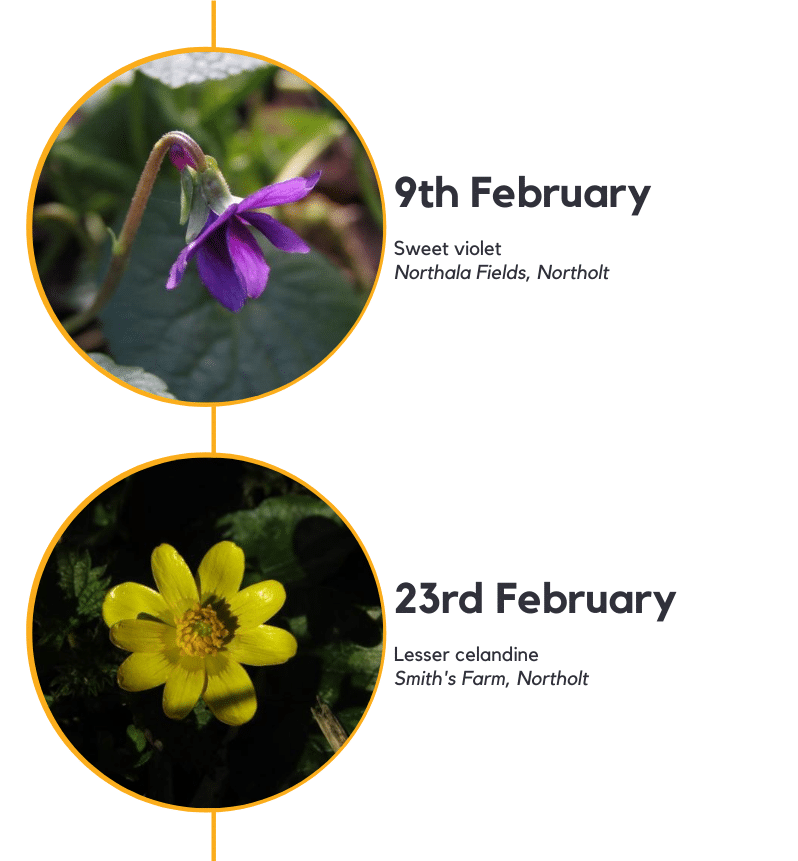
By March it was light enough to take photographs in my local park and I was intrigued to discover toads, frogs, smooth newts and toad spawn there.
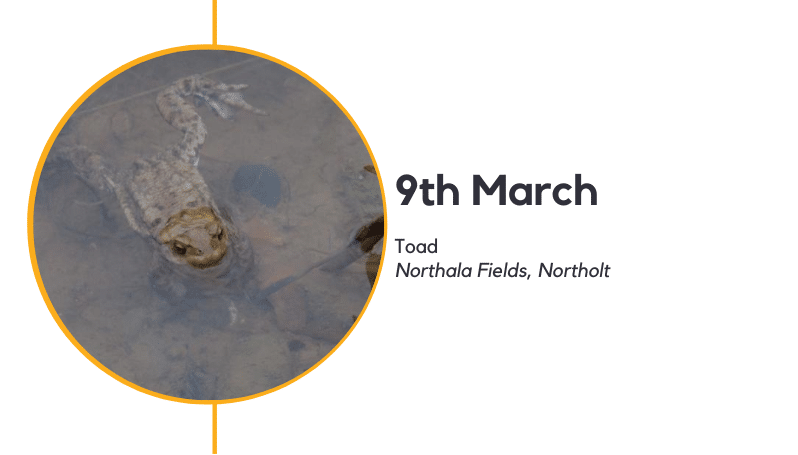
Blackthorn was out in April and spring flowers such as cuckoo flower and the unusual cuckoo pint.
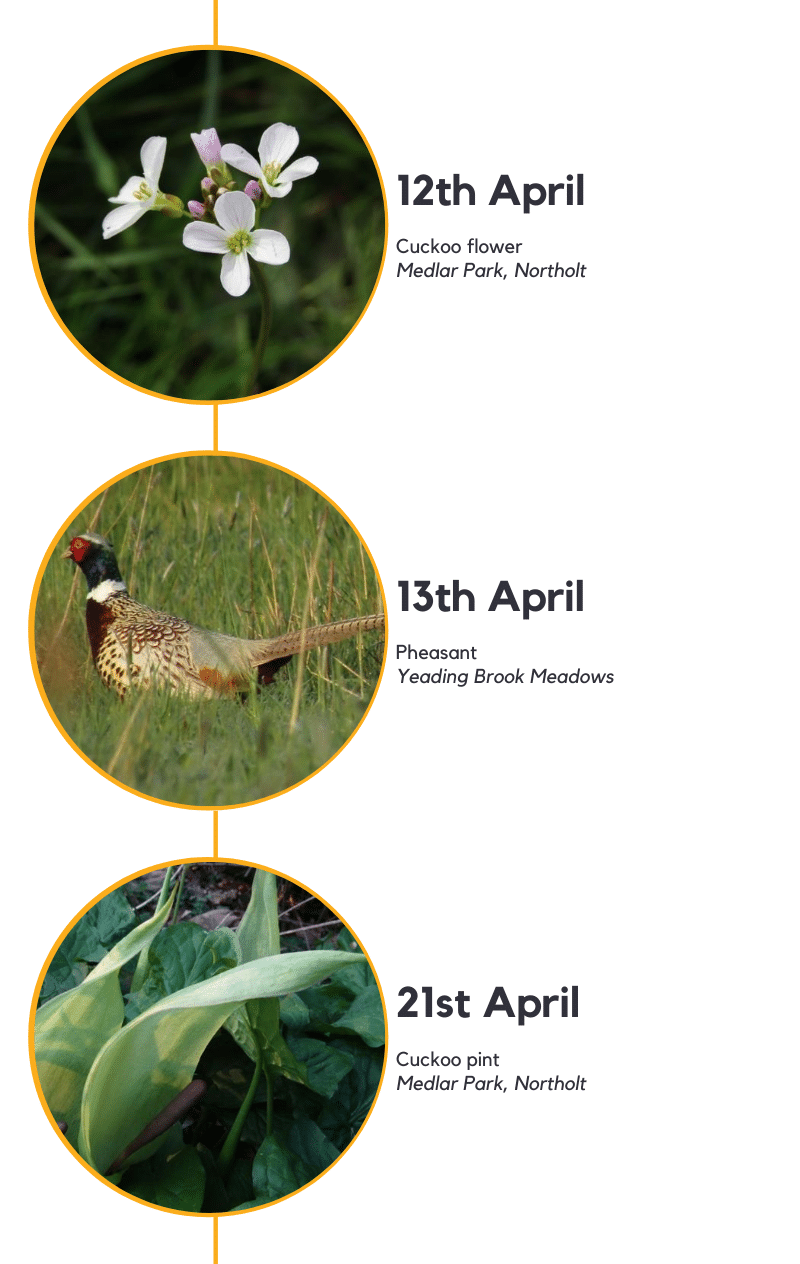
In May skylarks were singing near a lane. Primroses were flourishing in uncut areas of Northolt.
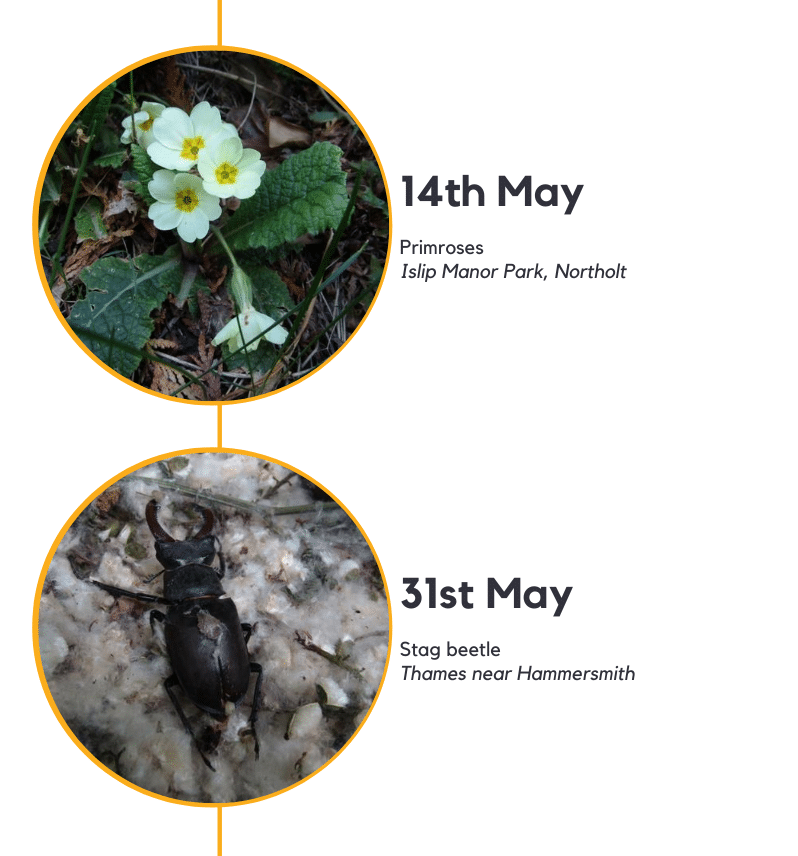
In June it was a delight to photograph common spotted, bee and pyramidal orchids, and discover even more wildflowers to identify.
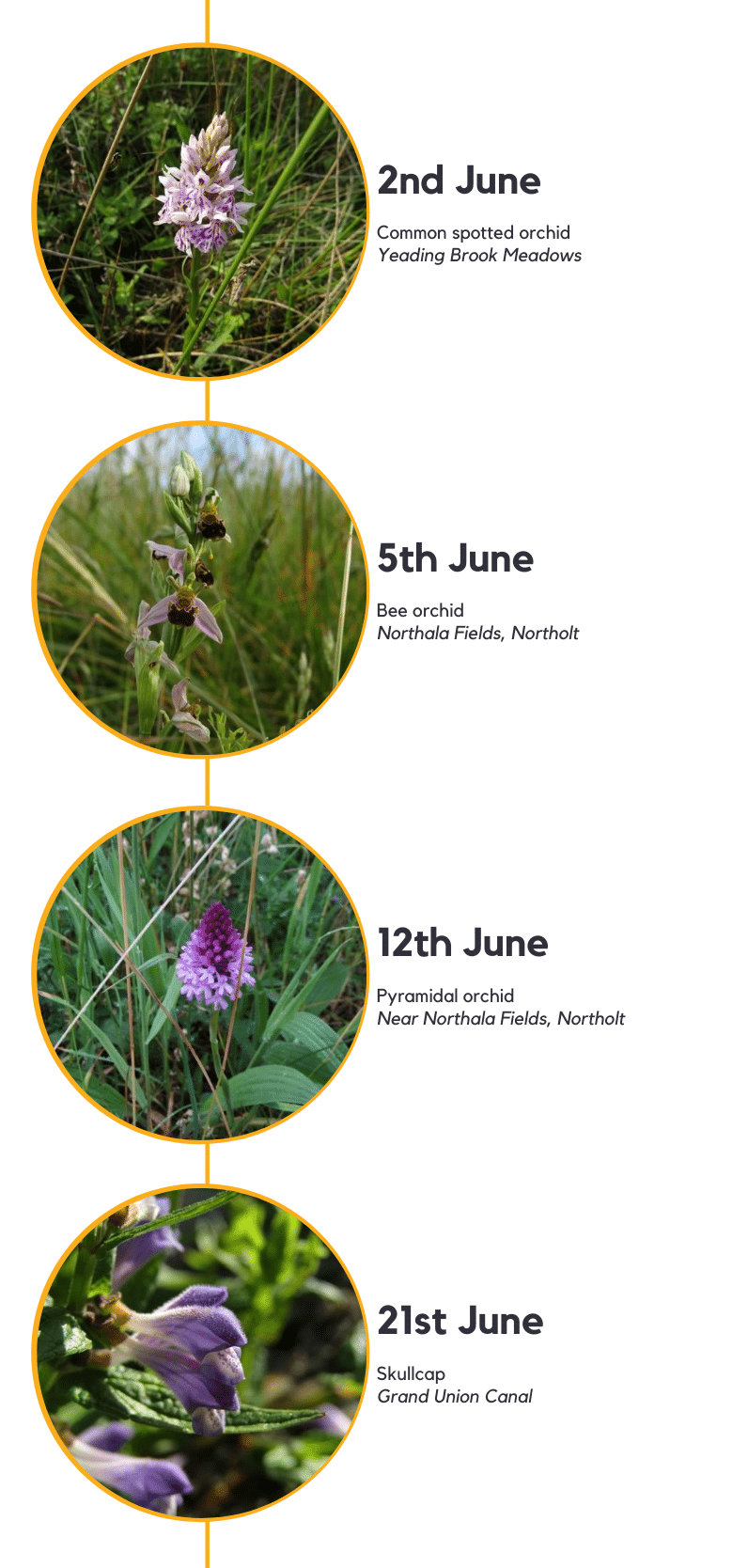
In July cinnabar caterpillars were on ragwort. Corn marigolds and cornflowers were out in managed meadows.
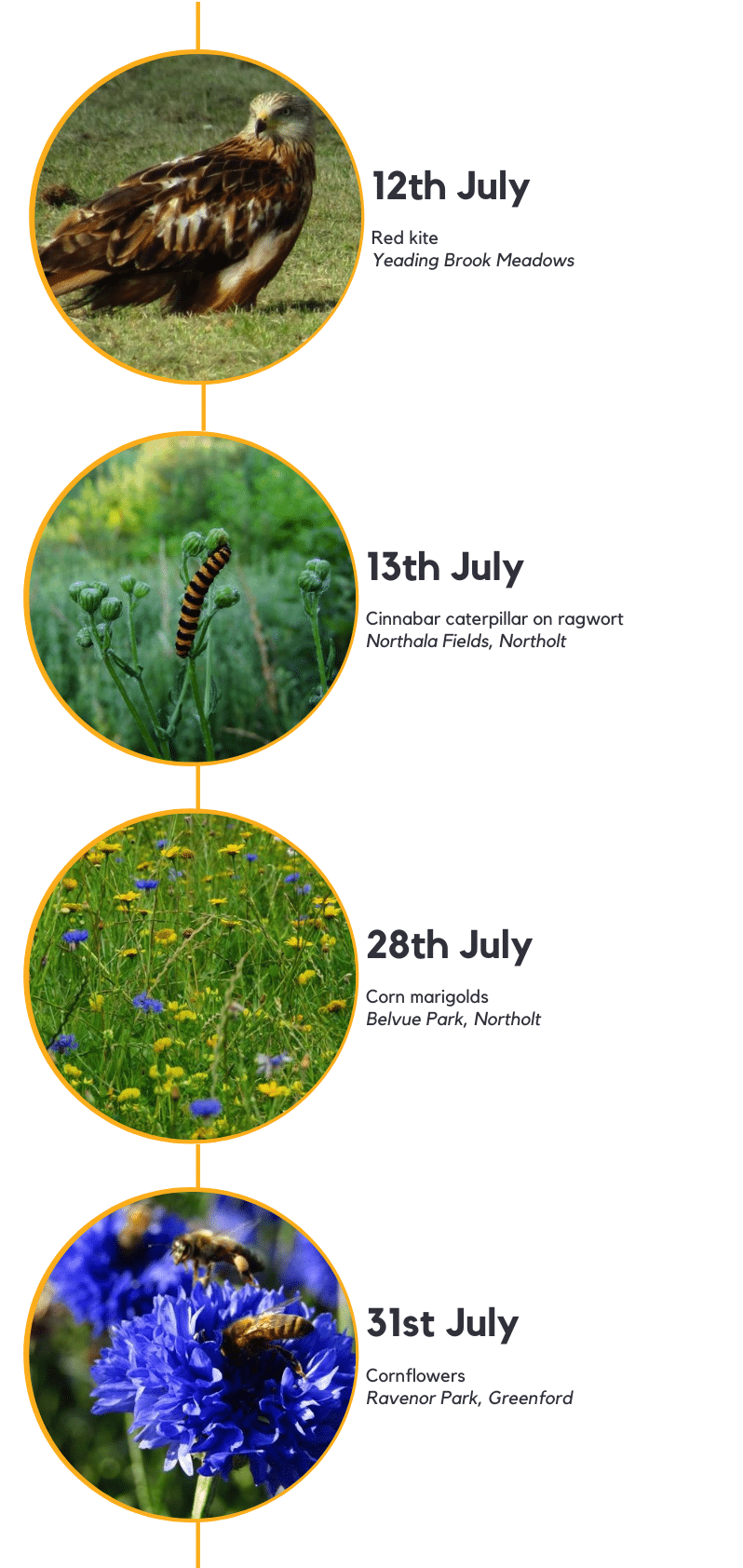
In August a sunrise was later exhibited as part of Ealing Wildlife Group’s outdoor exhibition.
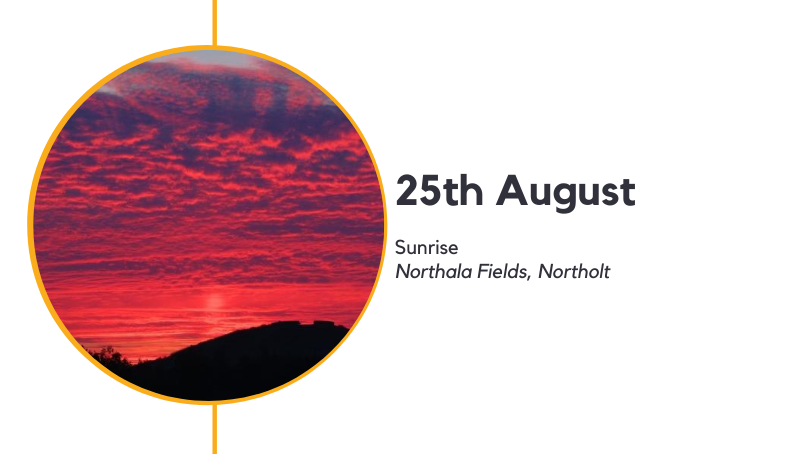
In September I caught a close view of a fox.
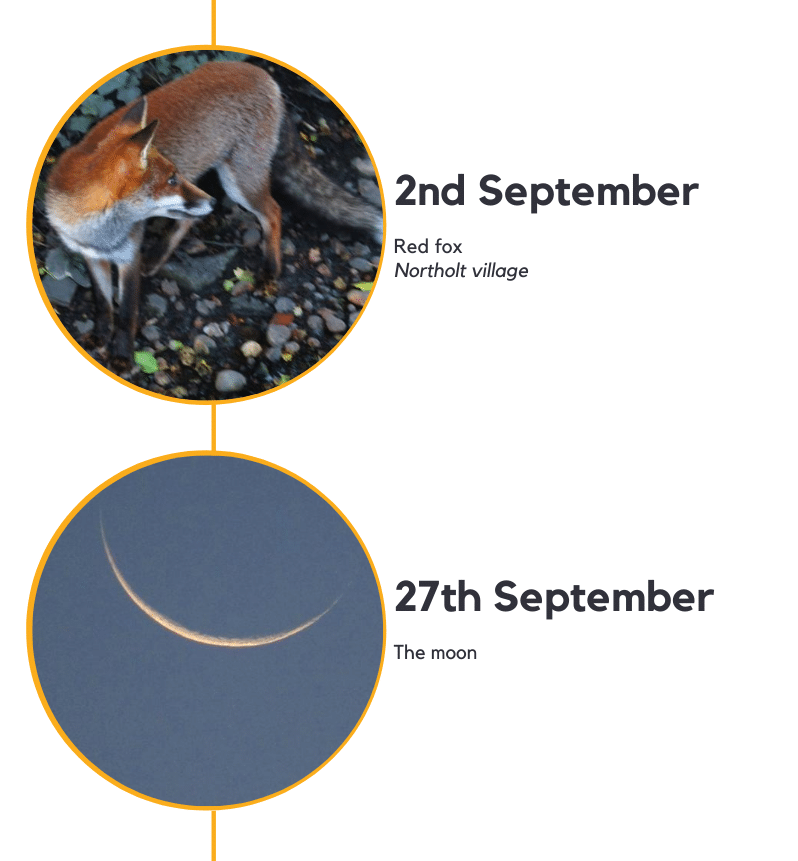
In October and November fungi like shaggy inkcaps and scarlet waxcap, and colourful spindleberries surprised me.
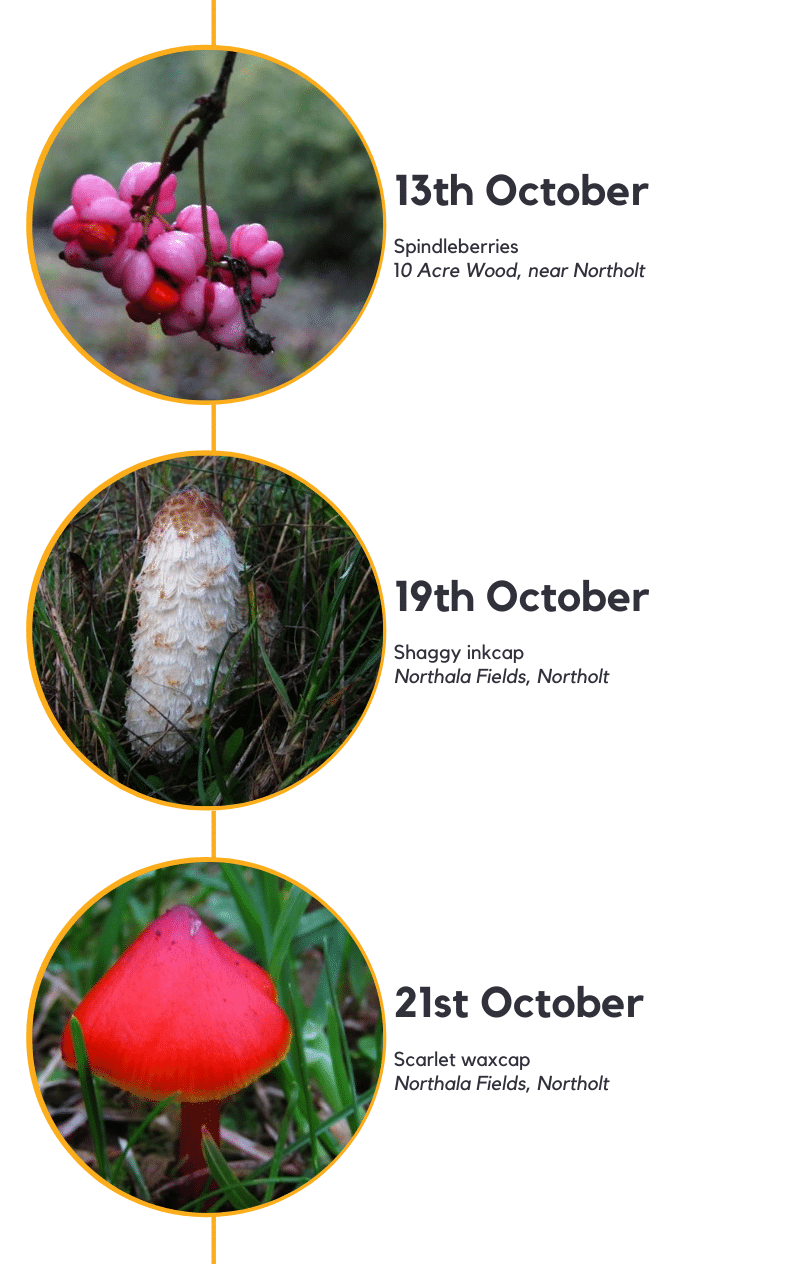
In early November I captured a heron fishing in the morning mist.
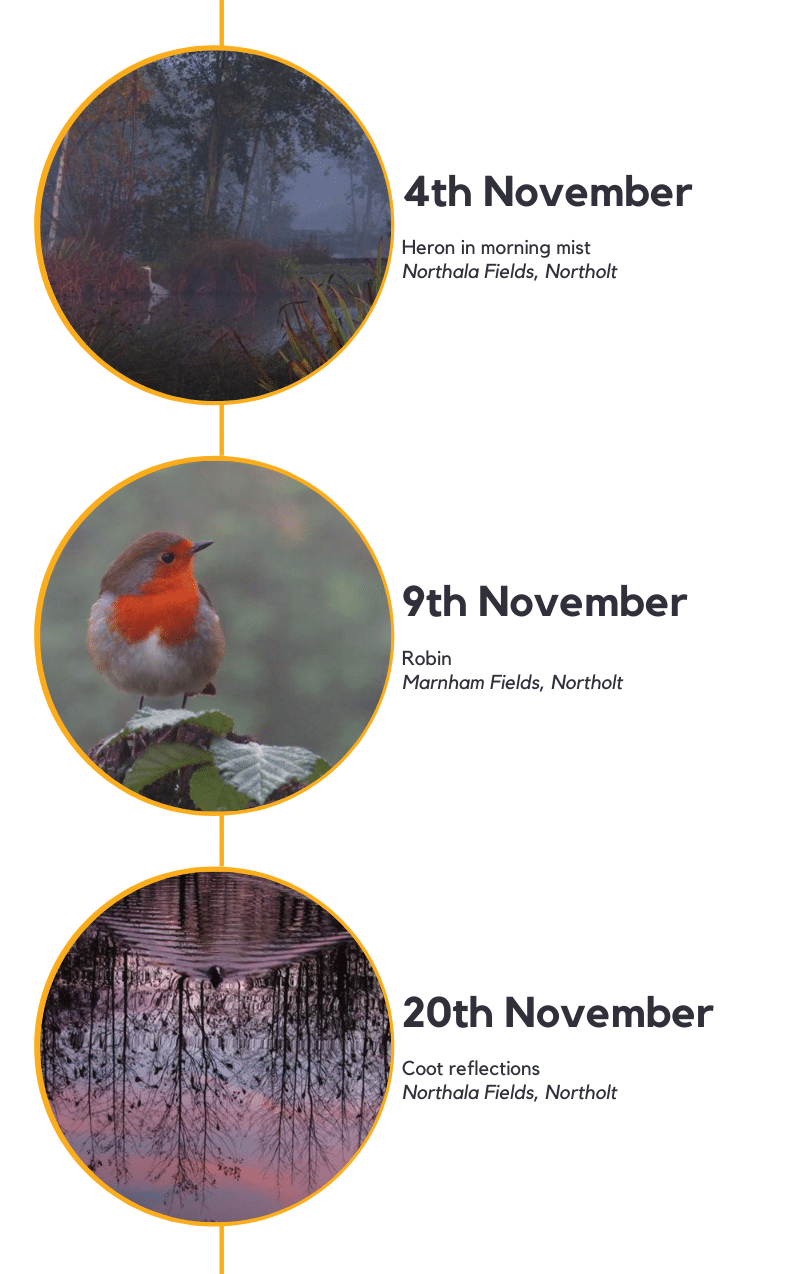
By the end of December I had recorded over 200 wildflowers and, including birds, insects, trees, amphibians, small mammals and fungi, over 365 different species.
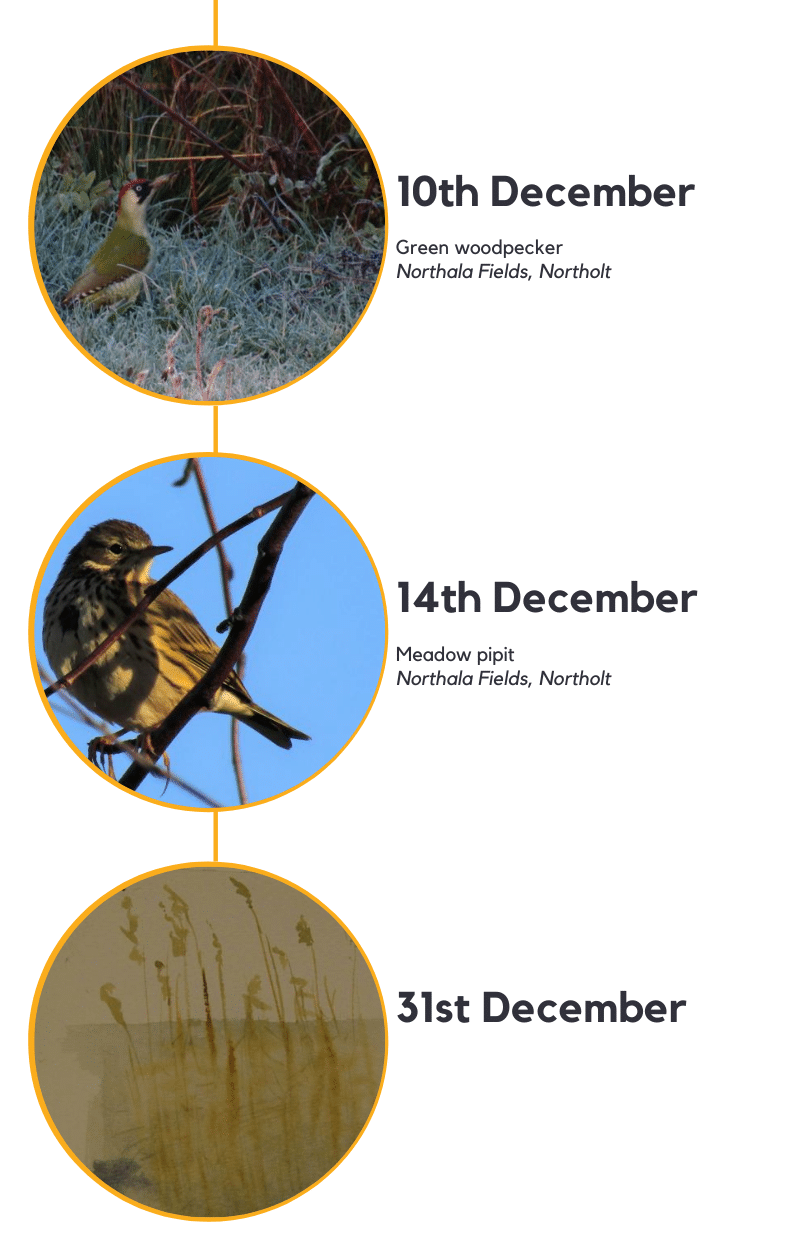
I celebrated the end of the year by posting a number of nature sketches I’d drawn over the previous twelve months.
The project gave me a fresh knowledge of my local wildlife. I want to share my journey to inspire others, and hopefully make a book.

What a super article. Thank you.
I love your pictorial diary, excellent evidence of how Urban spaces are is so valuable.
Great to know all this amazing nature is so near, thank you for doing this and sharing.
Excellent work, enjoyed seeing your daily posts/photos on EWG FB page…..
Beautiful photos.
You have a good eye to capture a great shot.
My favourite here is “coot reflections.”
A very worthwhile project.
Good luck for the book publishing.
Beautiful! I would love to see the whole collection because it is a great project and even the more everyday finds can have a wow factor – I like weeds in the pavement cracks, moths on the window, etc…. ! Thank you.
I didn’t realise northala fields was so full of nature.I have,not been there my self, but the younger ones in my family go there regularly, so I thought it was more kids park/playground type place. I will now have to take a look at myself with bins and camera. I remember the place years ago in the 1960s when it was owned by[I think]Chelsea and Kensington councils and as a boy cub we played a football tournament there,how places change and this time it looks better judging by your photos.